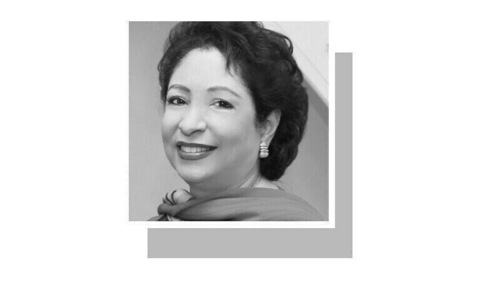KARACHI: YouTube Pakistan brought out the big guns on Thursday evening for its maiden Brandcast — a loud show of song and dance with hundreds of young content creators gathered under one roof to dazzle the deep-pocketed advertisers of the country’s “No. 1 online video and music platform”.
Beginning with a short concert and effusive presentations by popular YouTubers, the event featured what seemed like sales pitches to advertisers by top YouTube officials.
“Pakistan is one of the fastest growing markets for YouTube globally,” said Marc Lefkowitz, company’s director of partner development and management for Asia Pacific.
As many as 62 per cent of online Pakistanis between the ages of 18 and 24 reported watching YouTube at least once a month, he said. Citing a study conducted by parent company Google and research firm Kantar, he said 78pc of internet users in Pakistan said YouTube was the video platform they went to when they wanted to watch shows and online content.
The same study showed 76pc of internet users believed YouTube helped them “learn something new”. Three-quarters of internet users claimed the video platform carried content that helped them “dig deeper into their interests”.
In a separate interaction with reporters after the event, Mr Lefkowitz said the number of YouTube channels making Rs1 million or more in revenue has gone up 110pc on a year-on-year basis. There’re currently more than 5,400 YouTube channels with more than 100,000 subscribers in Pakistan, up 35pc on an annual basis. More than 350 of these channels have more than a million subscribers.
In his presentation and subsequent talk with the press, Google Country Director Farhan Siddique Qureshi said YouTube has become the centre of modern life as it fulfils educational, professional and entertainment needs of ordinary people, he said.
He urged businesses to capitalise on the “deep connections” that YouTube users have built on the platform to remain at the “top of (their) minds” for achieving a “greater sales uplift”.
A case study shared with the press showed Nestle Fruita Vitals was experiencing low sales in a few cities. It decided to test which advertising channel — TV or YouTube — would yield “efficient results”. YouTube surpassed TV’s reach on the third day, the case study showed. The on-target reach of YouTube versus the TV campaign was three times higher while its cost was 70pc lower, it said.
PR minders of the firm kept hovering over the YouTube representatives during the press briefing in an apparent attempt to stop them from oversharing. Mr Qureshi didn’t state any numbers with respect to the size of YouTube’s business in Pakistan, its earnings, payments to local content creators or taxes.
In response to a question about the perception that local content creators don’t make as much money as their counterparts from other parts of the world, Mr Qureshi said advertising rates are auction-based, not fixed.
Published in Dawn, November 26th, 2022













































